Extract from The Guardian
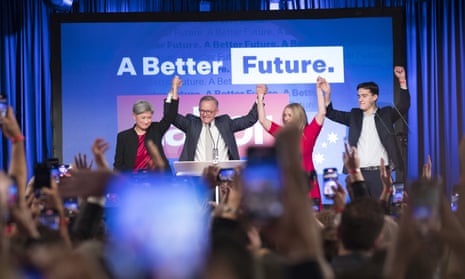
Labor has enjoyed a honeymoon period with voters after their brutal rejection of Morrison’s government.
Mon 19 Dec 2022 01.00 AEDT
Last modified on Mon 19 Dec 2022 07.49 AEDTThe road to 21 May
Scott Morrison began his final year in office on the back foot. Australians were fatigued by the coronavirus pandemic and battling natural disasters.
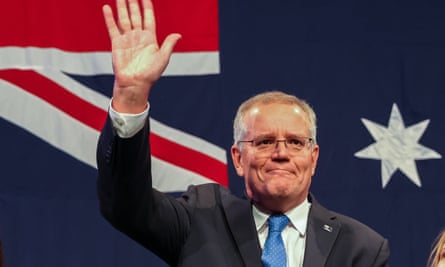
People were unsettled by the war in Ukraine and escalating geopolitical tensions closer to home. Inflationary pressure was increasing, eroding family budgets. Digging in for a tough political fight, the Coalition focused efforts on a cash-splash budget to be delivered in March. The government gave cash to Australia’s low- and middle-income earners and cut the fuel excise in half, and $20bn was allocated to regional spending over the medium term. But the largesse failed to turn the political tide.
On election day, the Liberal party recorded its lowest seat share since 1946. A swath of Liberal moderates – including the architect of the budget, Josh Frydenberg – were defeated by teal independents, the Greens gained territory in Brisbane and Labor was able to form its first majority government at federal level since 2007. The Australian National University’s Australian Election Study later concluded Morrison was the least popular major party leader since its research began in 1987.
Rapid fire transition
Labor sprinted out of the blocks after winning the election, beginning parliamentary negotiations on its new emissions reduction target for 2030 and on the federal integrity commission – Australia’s first federal anti-corruption commission. The 2030 target passed in August and the integrity commission in November. The government hosted a jobs and skills summit, setting the scene for new legislation authorising multi-employer bargaining as a policy response to years of stagnant wages. The industrial reform legislation strained Labor’s initially cordial relationship with key business groups and also required concessions to secure support from Senate kingmakers.
After delivering a budget that forecast a 56% increase in energy prices by the end of 2023, Labor spent the closing months of 2022 working up a regulatory intervention to try to secure price relief for consumers and businesses. Anthony Albanese also embarked on a wide-ranging reset of diplomatic relationships with the United States and France, and sought early personal connections with regional partners including Japan, India, Indonesia and Pacific leaders. Supported by the foreign affairs minister, Penny Wong, Albanese began to track towards a reset of the China relationship, which culminated in a face-to-face meeting with Xi Jinping in Bali in November.
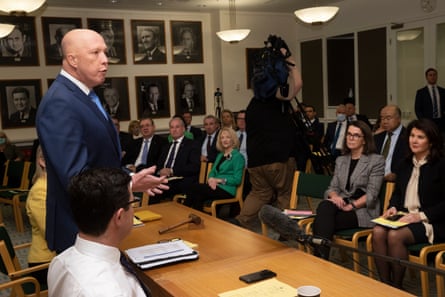
While Labor forged ahead, the Coalition regrouped, appointing Peter Dutton as leader, but Morrison cast a long shadow over the redux. It was revealed in August that he had sworn himself in to a number of ministerial portfolios during the pandemic, mostly without telling his former colleagues, Labor set up an inquiry led by former high court judge Virginia Bell and the House of Representatives went on to censure the former prime minister – a historic rebuke.
Tough battles ahead: climate policy
While the Albanese government secured an early win on legislating its 2030 emissions reduction target, a target has little value without mechanisms to drive the promised transition to low emissions. Over the coming months, Labor will reboot the rules for Australia’s heaviest polluters, who have traditionally been vociferously opposed to serious climate action. The government proposes to engage the Abbott-era “safeguard” mechanism to accelerate the rate of emissions reduction in facilities such as coalmines and aluminium smelters.
Labor had wanted to begin this work before Christmas, but that ambition was derailed by the power prices intervention. Given heavy polluters often buy carbon credits as an alternative to reducing emissions, the government also has to ensure the integrity of the credits scheme. After a respected whistleblower described Australia’s scheme as a fraud and waste of taxpayer money, Labor established a review by the former chief scientist Ian Chubb. The government will drive the safeguards overhaul at the same time as responding to the Chubb review – in January.
Shortly after that, Labor also has to push along its strategy to accelerate the uptake of electric vehicles. The other big item in the transformation agenda is building new high voltage transmission lines to bolt more renewables into the power grid – a huge project rendered more complex by supply chain disruptions and labour shortages. Next year is when the government’s climate agenda will be fleshed out. The response will be a key test. Are the climate wars over, or is Australia about to enter a new phase of an old battle?
Voice to parliament
Albanese has made achieving the central recommendation of the Uluru statement – establishing a constitutionally enshrined body to make representations to parliament and the government on matters relating to Aboriginal and Torres Strait Islander peoples – a key objective of his prime ministership. Achieving this requires a successful referendum delivering the required double majority (approval from a majority of voters nationally and a majority in a majority of the states). History suggests bipartisanship is the bedrock of successful forays to change the constitution, but the Nationals have already declared opposition. The Liberals are yet to determine a position.
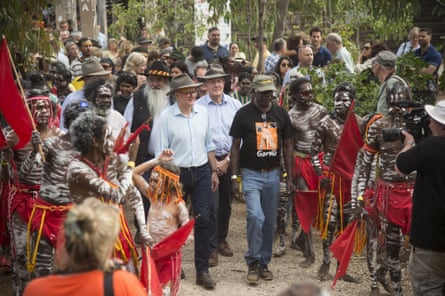
The referendum is expected to be held in 2023, but it is not entirely clear when. Some suggest October. Others hint it could be earlier. The prime minister flagged the possible referendum question when he attended the Garma festival in July – do you support an alteration to the constitution that establishes an Aboriginal and Torres Strait Islander voice? He also suggested words that could be added to the constitution. Opponents of the voice claim the change must be resisted because there is not enough detail about what it will do, a contention rejected by ministers and Indigenous leaders who have been working on the proposal for years.
Opinion polls suggest a majority of Australians in a majority of states would support the voice, with young people strongly in favour. Polls also suggest many people don’t have their head around the detail, a vacuum which could prove problematic for advocates of constitutional reform in the event “no” campaigners are able to mount an effective scare campaign.
Cost of living
“It’s the economy, stupid” is the famous political maxim coined by the Democratic party strategist James Carville. The quip persists because the performance of the economy is very often linked to the longevity of governments. Treasury forecast in October inflation was likely to peak at close to 8% by the end of 2022, before easing gradually over the next two years. That means sustained high consumer prices, accompanied by higher borrowing costs. These conditions are never comfortable for governments, but cushioning voters from a sustained cost-of-living crisis comes at a cost.
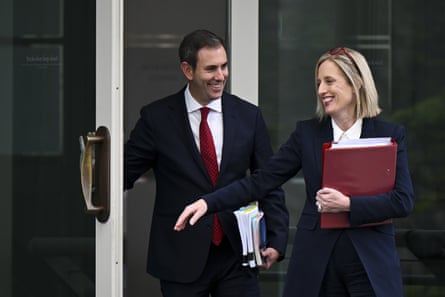
Earlier in 2022, the economic ministers, Jim Chalmers and Katy Gallagher, flew a kite about the stage-three tax cuts. Before the election, Labor promised to deliver the stage-three package, which predominantly benefits higher income earners. But flattening the tax scales will cost $254bn over 10 years. Chalmers and Gallagher gestured towards some tinkering to rebuild the fiscal buffers, but Albanese ultimately killed the debate.
Rebuilding the fiscal buffers remains a sound idea, given the uncertainty in the economic outlook, but it is unclear whether Labor is prepared to risk breaking an election promise. It is possible the government could seek a mandate for broader tax changes at the 2025 election. In any case, inflation and the state of the economy will remain a significant focus in 2023. Escalating great power competition in the Indo-Pacific also has significant fiscal implications for Australia. In the first quarter of next year, there will be a conversation about Australia’s ability to defend its shores.
Deterrence and military capability
Australia’s decision to enter the Aukus nuclear submarine agreement with the United States and the UK generated headlines around the world. Questions persist about how this agreement will be executed given Australia lacks a domestic nuclear power industry. It is also unclear how Australia will manages the capability gap that exists in the interim. There are also fears Aukus will fuel a regional arms race.
Nuclear submarines are only one component of a much bigger strategic question. Can Australia defend itself in a dangerous age? Do we have the right mix of hardware and personnel? Russia’s illegal invasion of Ukraine has put this existential query front-of-mind for many governments, including our own. To this end, an external review of Australia’s defence capability will report in March. That review is expected to pave the way for more spending on defence and deterrence, including the acquisition of more missiles and drones to step up Australia’s capacity to respond against sudden attack. Expect to hear much more on these questions in the opening six months of next year.
Electoral funding: testing the limits of new politics?
When Australians elected a Labor government in May, they also ushered in a progressive parliament with a substantial crossbench, including teal independents backed in part by the fund-raising juggernaut that is Climate 200. Disclosures released by the Australian Electoral Commission indicate the teal campaigns in 2022 were powered by $10.2m of political donations. Climate 200 raised $13m and donated to 23 campaigns.
The resources magnate Clive Palmer has also invested a fortune in recent federal elections, with a much smaller reward. Labor will have the numbers in parliament for an overhaul of the donations and disclosure regime, and has plans to legislate caps on electoral spending. The ALP’s 2022 campaign director, Paul Erickson, says the current lack of restrictions “has allowed extremely high-net-worth individuals, groups and networks to distort the political conversation with levels of advertising that were previously inconceivable in Australian elections”.
But Climate 200 notes electoral expenditure caps “do not put candidates on a level playing field if they don’t take into account the entrenched benefits to incumbents”. It is unclear whether Labor’s inclination to constrain campaign spending will be shared by the Liberal party after it lost a chunk of its metropolitan heartland to the teals in May, or whether a version of that reform can be hammered out, bearing in mind legitimate concerns about the structural benefits of incumbency. This won’t be the biggest debate of the new political year, but it will be an interesting one.
No comments:
Post a Comment